La Sportiva Lycan
Test Locations: Gunnison – Crested Butte Valley, CO; Sequoia, Kings Canyon, & Yosemite National Parks, CA
Test Duration (so far): 105 Miles
Stated Heel-to-Toe Drop: 6.0 mm
Stack Height: 28 mm (heel) 22 mm (forefoot)
Stated Features:
- Upper: breathable mesh with microfiber reinforcements, abrasion-resistant coating
- Midsole: Injection molded EVA with external structure for shock absorption
- Outsole: FriXion AT 2.0 with Rock Guard and Impact Brake System
- TPU Toe cap
- Wider forefoot for maximum comfort
MSRP: $115.00
Reviewer: 6’1″ , 145 lbs (see running profile)
Size Tested: US Men’s 12.5
Stated Weight per Shoe (US Men’s size 9): 268 grams / 9.5 oz
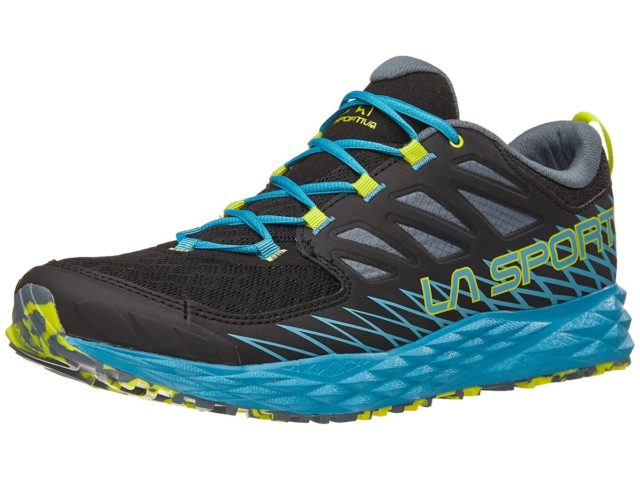
Intro
As a general rule, La Sportiva’s shoes tend to be on the narrower and stiffer end of the spectrum, designed to inspire confidence on technical mountain terrain. This is great if you like narrow, stiff shoes. But if you don’t, in the past, you were pretty much out of luck. This is where the Lycan comes in. It’s one of Sportiva’s few offerings that’s specifically designed for longer distances on more moderate terrain. To that end, it has a more spacious fit, softer cushioning, and lower-profile outsole lugs than most of the brand’s other shoes.
I’ve been intrigued by the Lycan since it first came out for exactly this reason. I’ve run in a few other La Sportiva shoes in the past, including the Bushido and Akasha. While they were both great shoes for the right people, I found that they weren’t quite wide and soft enough for me to remain comfortable after a few hours of running. This has always bummed me out, as I really like the quality materials and attention to detail in La Sportiva shoes.
So, does the Lycan successfully translate La Sportiva’s mountain running know-how into a comfortable long-distance shoe? After about 100 miles in the shoe, I’m pretty well convinced that the answer is yes. In this review, I’ll break down how I’ve reached this conclusion and provide my thoughts on how La Sportiva can improve the shoe even more.
Fit
As always, it’s best to try on the Lycan in person before you buy it. If you do decide to order it online, be sure to use your European size. La Sportiva’s conversion from European to US sizing seems to be slightly off, so their shoes tend to run small by about a half- to a full-US-size. For example, I wear a US 11.5 in most shoes. In the Lycan, I had to size up to a US 12.5.
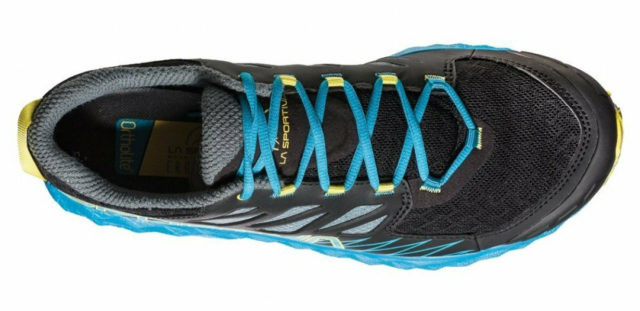
Aside from the sizing, the Lycan fits very differently from other La Sportiva shoes I’ve worn. It’s built on the brand’s roomier “Tempo” last, but I’ve found the fit to be even more spacious than other shoes built on the same last (such as the Akasha). The Lycan’s heel and midfoot aren’t particularly wide, but they are pretty high-volume. Since I’ve got very low arches, I had to cinch down the laces pretty tight to get a good fit in the midfoot. But if you have normal or even high arches, the Lycan should fit securely and comfortably. The Lycan’s toebox isn’t as wide and rounded as an Altra, but it does provide significantly more room for toe-splay than other La Sportiva shoes I’ve used.
Overall, the Lycan’s fit feels similar to the Hoka One One Speed Instinct 2 or Salomon S/Lab Sense Ultra, which have been some of my favorite shoes for the last few years. The Lycan isn’t quite as locked down and secure on technical terrain as those other shoes, but the Lycan is comfortable and roomy enough to accommodate foot swelling after several hours in the shoe. With that said, the added roominess does sacrifice some security / stability, and I have noticed my feet slipping a little on off-camber terrain.
Features and Construction
One of the first things I noticed about the Lycan is that it looks like a pretty “normal” shoe. If you’re not sure why that’s remarkable, go scroll through our Brand Guide for La Sportiva’s running shoe lineup. Where many of La Sportiva’s shoes have fancy inserts, complicated midsole constructions, and non-traditional uppers, the Lycan takes a simpler approach. There’s a time and place for fancy features, but I think that the Lycan’s straightforward design helps it avoid the overbuilt feeling of some of Sportiva’s other shoes.
The Lycan has a standard lacing system with a well-padded tongue, a breathable mesh upper reinforced by synthetic microfiber overlays, and a stout toe cap that wraps around the sides of the toebox.
The midsole consists of a single piece of soft but springy EVA foam, with a slightly above average 28 mm (heel)/ 22 mm (forefoot) stack height. Finally, the outsole features La Sportiva’s harder / more durable FriXion Blue (called FriXion AT 2.0 in the U.S., for some reason) rubber and has low-profile, widely spaced lugs. This design is intended to provide good traction on hard surfaces and improved durability relative to the brand’s other softer, grippier, but less durable outsole compounds.
Weight
With a stated weight of 268g/ 9.45oz for a US Men’s size 9, the Lycan is on the upper end of my preferred weight range for shoes, but it’s still light enough that it doesn’t feel heavy or cumbersome on trail. Here’s how the Lycan’s stated weight for a US Men’s size 9 compares to some other shoes with similar stack heights:
268 g/ 9.45 oz- La Sportiva Lycan
272 g/ 9.6 oz- Salomon Sense Ride 2
283 g/ 10.0 oz- Salomon S-Lab Ultra 2
294g/ 10.4 oz- Inov-8 Trailtalon 290
301g/ 10.6 oz- Altra Lone Peak 4.5
So while it’s not a super light shoe, the Lycan is quite a bit lighter than similar offerings from other brands. Personally I think that it strikes a good balance between lightness and cushion/protection, though the slightly higher weight does make it feel a bit slower on short/fast runs.
Upper
The Lycan’s upper is simple and mostly effective. It consists of a breathable, open mesh material with stiffer synthetic overlays, which give the upper a little more structure. The tongue is very well padded and has prevented any pressure points from the laces so far, but the lack of any kind of gussets does allow it to occasionally slide off to the side during runs.
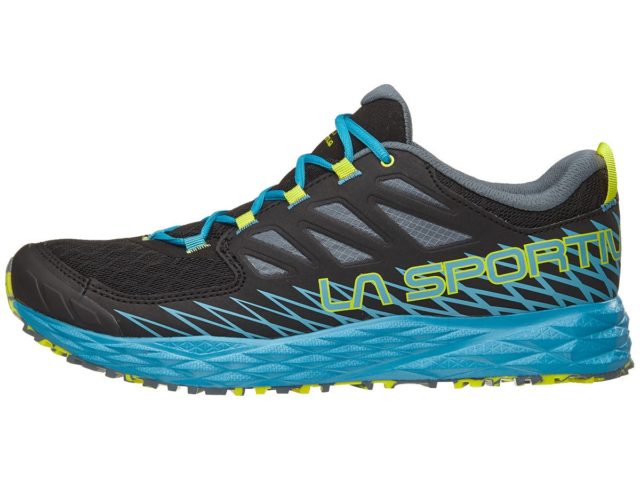
While most of my runs in the Lycan have been in pretty dry conditions, I have worn them through several stream crossings. The open mesh in the toebox allows them to drain and dry quickly, though the thick tongue does stay wet slightly longer. The breathable materials used for most of the upper kept my feet from overheating, even on runs in 80-90 degree weather.
Midsole & Cushioning
Along with the wider fit, the Lycan’s midsole is what really sets it apart from other La Sportiva shoes and makes it well suited to longer runs. The cushioning is still firmer than a soft shoe like the Hoka Challenger ATR 5, but the Lycan does feel soft and comfortable underfoot. Most importantly, it strikes a nice balance between energy return and cushion that so many shoes seem to miss. The Lycan’s midsole feels springy, but has enough soft cushion to help prevent foot fatigue.
The 28 mm heel / 22 mm forefoot stack height is low enough that the Lycan still offers some ground feel, though not nearly as much as a more minimal shoe like the Altra Superior 4.0. The ground feel is enhanced somewhat by the lack of a rockplate, while the full-length rubber outsole has provided plenty of protection against sharp rocks in my experience.
Outsole & Traction
As previously mentioned, the Lycan’s outsole uses La Sportiva’s FriXion Blue rubber, which is designed for durability and traction on hard surfaces. I’ve always thought that Sportiva’s outsole compounds work exceptionally well, and the same is true in this shoe.
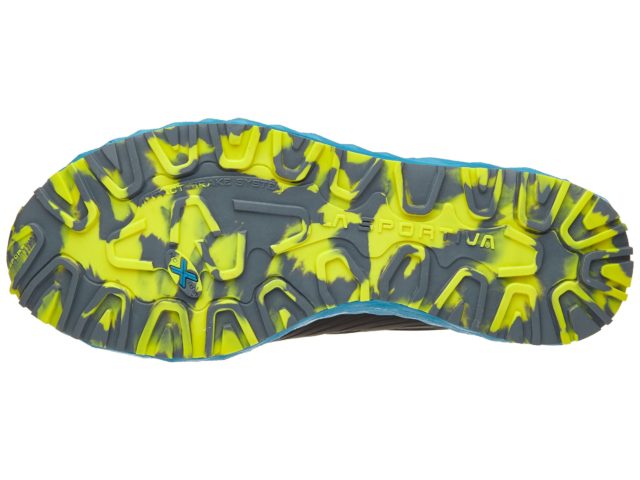
The Lycan’s outsole doesn’t seem all that crazy at first glance — the lugs are low and widely spaced, and the rubber doesn’t feel particularly grippy. But once on the trail, the shoe grips surprisingly well on hard surfaces like scree, slickrock, and packed trails. It does struggle on anything loose or wet, but it works great for the hard surfaces for which the shoe was designed.
On The Trail
Most of my miles in the Lycan were run on the rocky, dry trails of Sequoia / Kings Canyon and Yosemite National Parks in California. In addition to shorter daily runs, I also wore the Lycan for several full-day hike / runs, which gave me a better sense of the shoe’s long-term comfort. For my running style and preferences, the Lycan performed the best on more moderate to non-technical, hard-packed trails.
As previously mentioned, the Lycan has a roomy fit throughout. In combination with the slightly softer cushioning, this makes the shoe comfortable for cruising non-technical trails. On such terrain, the ride feels very similar to the Salomon S/Lab Sense Ultra or Sense Ride. With that said, the Lycan’s heel-to-toe transition doesn’t feel quite as smooth as the Sense Ultra or the Sense Ride. I think this is probably a result of the Lycan’s flatter, less rockered outsole shape. It’s not super noticeable at slower paces, but it does make the shoe feel a little awkward when you try to pick up the pace.
While the fit and cushion are great on even terrain, I’ve found that they make the shoe feel a little insecure on technical trails. My feet slip around a little more in the Lycan than in other similar shoes (Salomon Sense Ultra/ Sense Ride, Hoka Speed Instinct), which makes running on uneven or off-camber terrain a bit tricky. The low-profile lugs on the outsole also struggle to provide enough traction on loose or even slightly muddy trails.
Then again, the Lycan was never designed for technical, muddy, or fast-paced running — La Sportiva has plenty of other shoes for that. The Lycan was designed to provide a more comfortable option for long days on trail, and aside from the minor quirks I noticed with the ride, it does that quite well.
Durability
I obviously can’t say a whole lot about the long-term durability of the Lycan right now, but it has held up quite well to the first 100 miles of use. I’ve always had good experiences with the quality and durability of Sportiva’s shoes, and I have high hopes for the Lycan. The upper shows no sign of wear, and the midsole is just as springy and responsive as it was out of the box. The outsole has worn down a little in the toe / forefoot area, but not so much that it affects traction at all.
I’ll report back on the long-term durability of the shoe, but at the moment I feel confident that the Lycan will keep going for at least another 250-300 miles.
Who’s It For?
The Lycan is a great addition to La Sportiva’s shoe lineup in that it fills a long-standing gap in their mountain running line. The main complaint that I’ve heard about La Sportiva shoes in the past is that they’re too narrow and stiff for longer on-trail runs, especially for people with wide / high-volume feet. The Lycan addresses this problem with a roomier fit, softer cushioning, and more flexibility than the brand’s other models.
These features do decrease performance on technical terrain — the Lycan is not a great choice for very tricky, off-camber terrain or wet / loose conditions. But if you’re looking for a comfortable, everyday shoe for non-technical terrain, the Lycan is worth checking out. It’s an especially good option for runners that enjoy shoes like the Salomon Sense Ultra, Salomon Sense Ride, or Hoka Speed Instinct — but who want a shoe with a slightly higher volume fit.
Bottom Line
To answer my initial question about the shoe, I think that the Lycan successfully carries La Sportiva’s mountain running features over into a more comfortable platform that excels on long, non-technical outings. It’s durable, comfortable, and in my mind covers all the bases for a solid long-distance training shoe. It wouldn’t be my first choice for fast or technical runs / races, but it’s a good option for slower-paced, long days on moderate terrain.


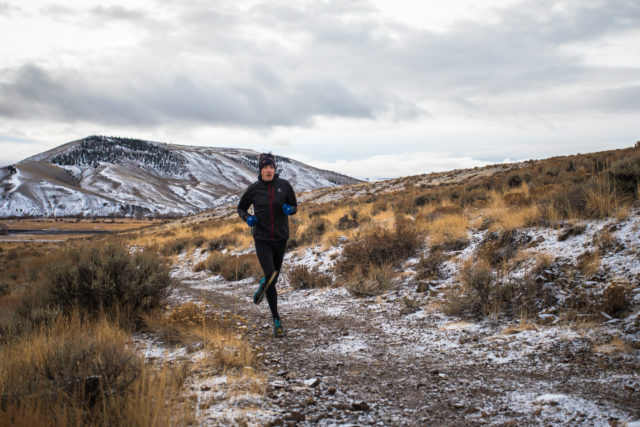
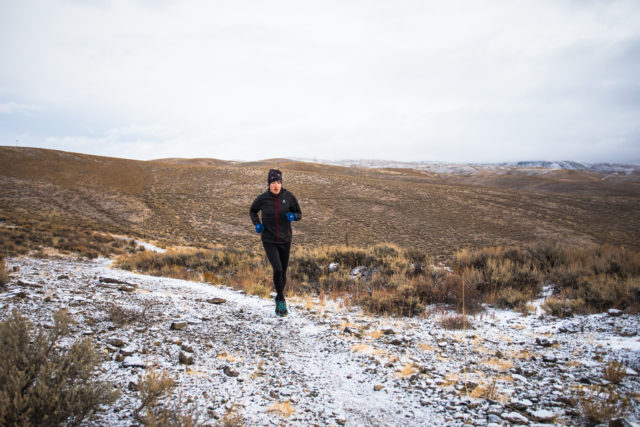
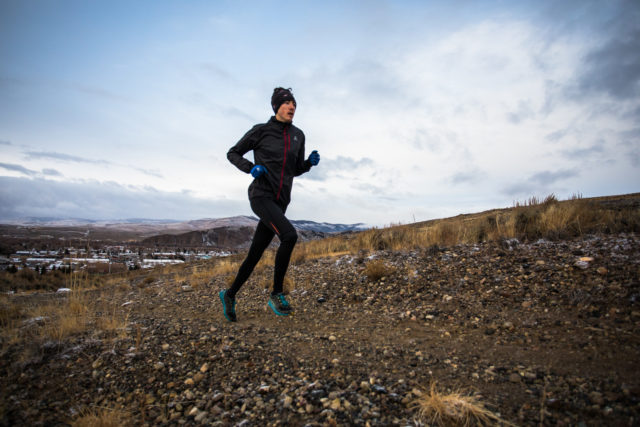

Your review of the Lycan is really appreciated. I’ve run in the Raptor and found it very large in the toebox and your statements about the Lycan and seemingly to have more volume for wide and high volume feet compared with the typical La Sportiva line-up concerns me. I’ve ordered a pair of Lycan II (April 2020) so I’ll see how it goes. You review the Lycan (Jan 2020) in this article. Do you know anything about the Lycan II? How it differs from the Lycan. Thx
Hi Curtis,
Good question- I haven’t had a chance to try out the Lycan II’s yet, but from what I can tell the main change from the original Lycan is an updated outsole. The Lycan II has much deeper / more aggressive outsole lugs than the Lycan, which should improve the shoe’s traction on loose terrain. With that extra outsole material comes some extra weight — the Lycan II is about 1.6 oz heavier per shoe than the Lycan.
Aside from the new outsole, the Lycan II looks to be built on the same last and have a pretty similar upper to the Lycan, so I’d imagine the fit would be similar. I haven’t personally run in the Raptor, so I’m not sure exactly how the Lycan’s fit compares, but I’ve got fairly narrow feet and didn’t find the Lycan to be too roomy / loose fitting.
Hope that answers your question!